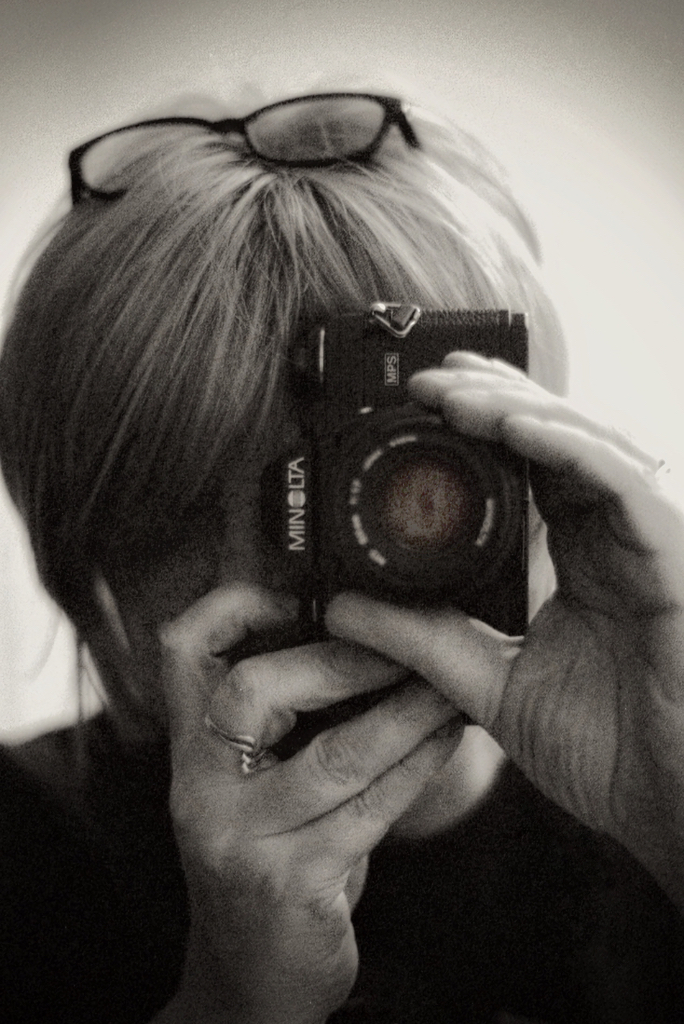
A stroll through my cameras
Spring

I started serious photography back in the halcyon days of 1972. Back then, serious cameras cost serious money – my first pro SLR was the Olympus OM-1. To give younger readers an idea of just how expensive this stuff was, my OM-1 cost almost as much as my first car! Most people back then didn’t have a color TV or a stereo, so cameras, especially SLRs, were naturally the preserve of the pros, the elite and those with a total passion for photography. Those who had neither the means nor inclination to own an SLR made do with an Instamatic – camera phones were 50 years away at the time. Add to this film processing costs and people were less inclined to take endless selfies and photographs of their dinner. Turns out the 70’s weren’t so bad after all.
Over the years I got to shoot film with most of the major brands and it’s interesting to me now, looking back, at how they came across back in the 1970s compared to today’s beardies and wunderkinds views on the web – the new messiahs of the medium as they would have you believe. People new to film doing research as to what to buy may be interested as to how they were perceived by me (and plenty of others) back in the 1970s.
Pentax – the Granddaddy
The first commercially successful SLR whose basic layout set the standard for everyone else. Sadly by the 1970s they were looking old, tired and even the advertising featuring arch nice old duffer, tropical suit wearing, Mojita quaffing and pool side chat host Sir Alan Wicker only exasperated things. It typecast the camera as a thing a terribly nice old thing would buy. Few pros used Pentax and advertising implied it was designed for people who like a nice hot cup of cocoa before bed.
Nikon – Undisputed masters of the professional world.
Look at any press pack screaming for a comment on the news and they were all shooting Nikon. Out of reach price wise for any but pro press packers or hobbyists who were happy to live in a carboard box as the price of their passion. Undeniably the best, old and clunky definitely but undeniably desirable just for the name and its association with it being THE pros choice.
Canon – Hardly ever seen, and usually only the point and shoots.
The AE-1 was some way off and the FT series were looking VERY dated, like a Spotmatic but with a lead weight thrown in for free – if you needed to club a baby seal while out and about the FTb was perfect.
The AE-1 when it arrived was promoted by the sorts of sports people you might trust to kick a ball about but often had trouble stringing sentences together. Buying a camera on the basis of a swimming champs recommendation seemed insane and confirmed its amateur status. The adverts made me cringe then and probably would now with the ‘I can’t believe I can use a camera’ coming from people who sounded like they would struggle with a toaster.
Minolta – Seen as amateur kit if they were seen at all.
Few shops carried them apart from happy snappy type things or at best the rangefinders. The SRT was on life support and it looked it. The girl in her best outfit but with the wonky eye and pint of cider at the party that everyone is trying to avoid. No motor drive capability doomed them as a pro camera. Of course, the 7000 series auto focus completely took everyone by surprise and was hugely successful, but to me with my smug mode turned fully on it just screamed amateur hour. I can still remember a relative buying one and as they were a very skilled photographer I experienced the sort of shock you may feel if a relative told you they were going off to fight for a Marxist guerrilla group in South America!
Olympus – Brash new challenger.
The bad boy of the pack, being bought by those who wanted to cock a snook at convention (me for instance), the outside fringe and those who wanted to be different (me again!). Of course, David Bailey was plugging them and who didn’t want to be David Bailey back then. I can remember walking out the shop with my first OM1 and thinking ‘well I am up there with the big boys now so out of the way peasant and go take some pictures of your cat with your Kodak 33′.
Over the next few years the league table of the manufacturers swayed this way and that but the basic view of these manufacturers wavered not one bit.
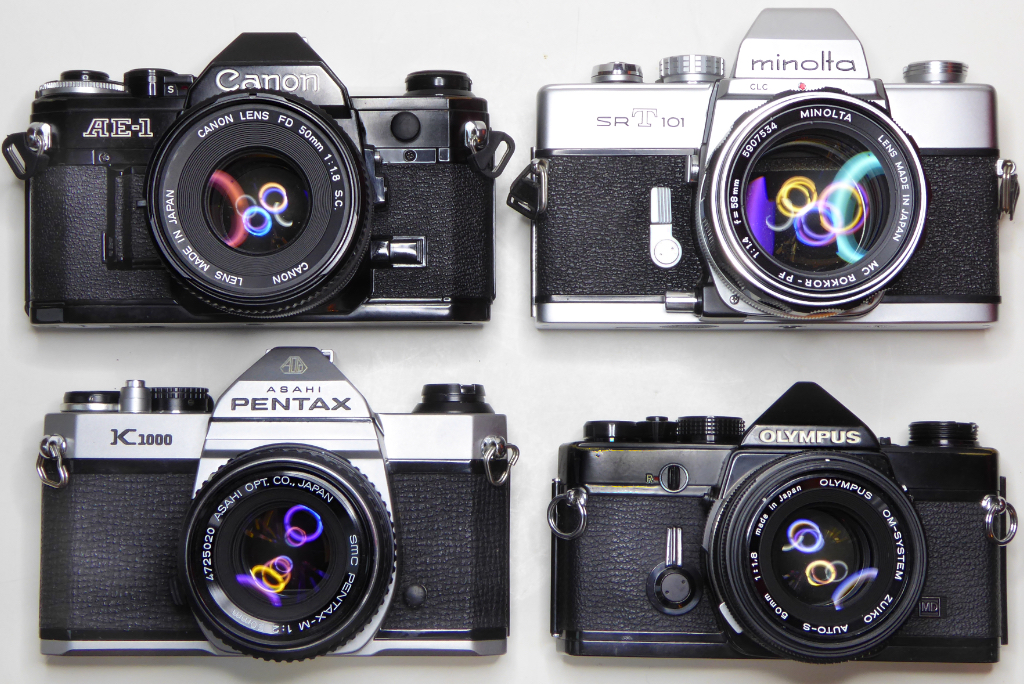
Summer
I sleep walked into being a pro photographer, alternating between being pro or doing a day job. At times I would exhaust myself from pro work and lose the ‘edge’ so I would drop back to doing a 9-5.
The pro work was variable, mostly product photography, press work for local papers (Mayor and Z list celeb opens new Supermarket or Sophie wins best sponge cake at village fete), the occasional assignment for a small run magazine (Gas Mask Collector – Eric finds a rare Soviet gas mask at a flea market). My gear increased of course and I moved up/down/sideways depending on brand loyalty from Olympus to Nikon.
I got to use a few more cameras; the dreadful Olympus OM-4Ti, the horrid Canon T90, the ghastly Canon EoS which confirmed to me the soulless nature of all of Canons creations.
The shoot that finally banged the mausoleum door shut was a catalogue shoot. The company made so many changes it started to seem like I was in one of those repetitive nightmares. The endless changes from the client turned what should have been a simple shoot into a quagmire of bland.
That was it – I was done with photography!

Autumn
I returned to photography at the turn of the millennium for a limited turn handling very specialised products but by 2010 I was done. For good this time I was sure! The pressures of the shoots became highly stressful and the demands from the people paying for the shoots increased. The rise of the web meant constant changes to shoots, constant demands for shoots of revised products and timescales to get work done shrunk to everyone wanting everything the day before yesterday!
The digital kit was sold off along with the studio gear and that was that. Peace at last!
Roll on 5 years….. I found myself in a junk shop and amongst the decaying bric-a-brac I spotted a Pentax KX. It reminded me of my old Spotmatic. I picked it up to see if it was a runner and on a whim I decided to buy it for the princely sum of £12. Just holding it made me want to take pictures again so I stopped at a chemists and bought myself some film and started shooting.
The feel of a film SLR in my hands triggered all the old reflexes and made me want to be creative – like a black and white print slowly emerging in developer I knew I was home.
I started to acquire more cameras as part of a small collection of iconic cameras from my 1970s salad days. It became obvious that a great many of them were sold by people who were completely clueless, or completely dishonest.
The endless online wails of people struggling with broken cameras made me realise I was not alone. Little by little I found myself drawn into the world of camera repair and refurbishment. In part this was because getting a professional technician involved was expensive. I don’t begrudge paying for expertise but the economics of collecting forced me to consider doing work myself. How hard could it be? Very hard if the last few years are any guide!
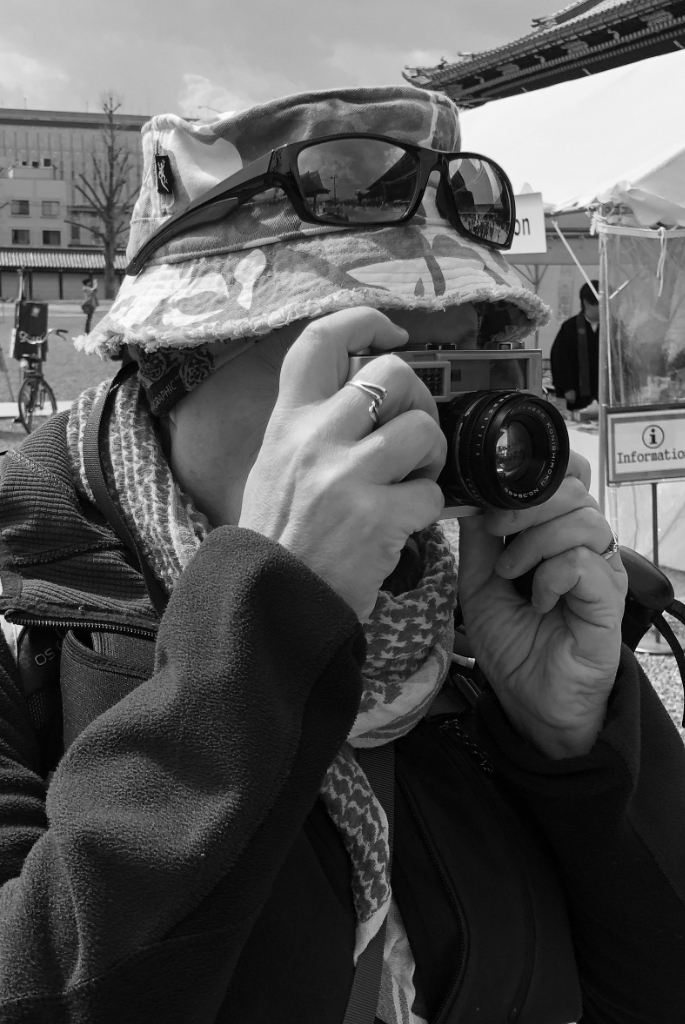
Starting with online guides and more enthusiasm than skill I busted quite a few things, but learnt useful lessons. There’s an old saying, ‘those who make no mistakes make nothing’ However don’t take that principle too far. Of course, I have improved and now the odd challenge only serves to keep confidence balanced safely short of arrogance.
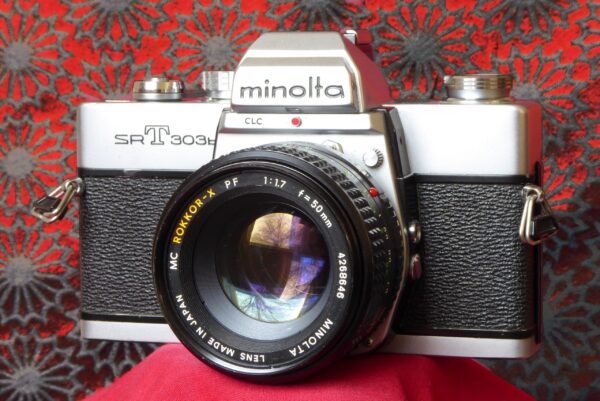
I started with lens repairs. Over time I built up a good selection of tools and practical experience of fixing lenses as well as cameras. I work mostly on Minoltas but have recently started to work with Pentax models. The longer term is taking a course allowing me to carry out more comprehensive works on wider selections of cameras.
Winter
Film is back – who would have thought it!
The current renaissance allows oldies like me to relive their youth and younger users get in on the zeitgeist. Sadly, from experience, I estimate as many as half the film cameras being sold are defective in some way. Film is expensive and it’s frustrating to see people having endless problems when buying classic gear. Wasting film, processing costs and their time and often becoming disenchanted with the whole thing.
For many, the problem is self-inflicted – expecting a mint camera for £30 from eBay to work out of the box. Most buyers have little appreciation of the fact that these cameras are operating way beyond their expected service life. Many are by now in dire need of servicing and attention.
How many 50-year-old complex machines that still work flawlessly do you own?
After a particularly frustrating experience with a camera from a dealer, I decided to start providing quality cameras. Cameras I had personally used and worked on to provide a better film experience for people. Allowing them to expand their photographic skills with film.
So, that’s my aim – I want to be able to provide people with a known FULLY working camera. So that they can truly enjoy the film experience. As well as enjoying these beautiful cameras as much as I did the first time around. Now of course I am appreciating them all over again.



It’s heartening seeing classics I learnt to shoot with are part of the wave of the future for many. It’s good to see younger people getting back to film. I want to help them have the best possible experience they can have.
Check out the online store with a selection of cameras chosen by me and used by me. This shows you are buying from someone who not only knows cameras. As well as used them for a large part of their life but is truly passionate about them.
Earlier, I used the phrase ‘Current Renaissance’ and to me that’s how I feel about the resurgence of film. But, if we are to have a lasting film community and not simply a fad it’s critical to keep this equipment running, the knowledge to use and repair it alive and to encourage younger people to get involved in film.
I spent a large part of my life using cameras. Now it seems fitting that I spend time repairing them for others to use.
Life for me has truly been a life through a lens – from both sides of it.
Further Reading

Mel is one of the driving forces behind High 5 Cameras and writes all our articles.
Starting serious photography back in 1972. Over the years she got to shoot film with most of the major brands in 35mm and large format as both a studio photographer and content provider for websites in the early life of the web. These days she is rediscovering photography and has become the GOTO person for knowledge on camera repair advice.


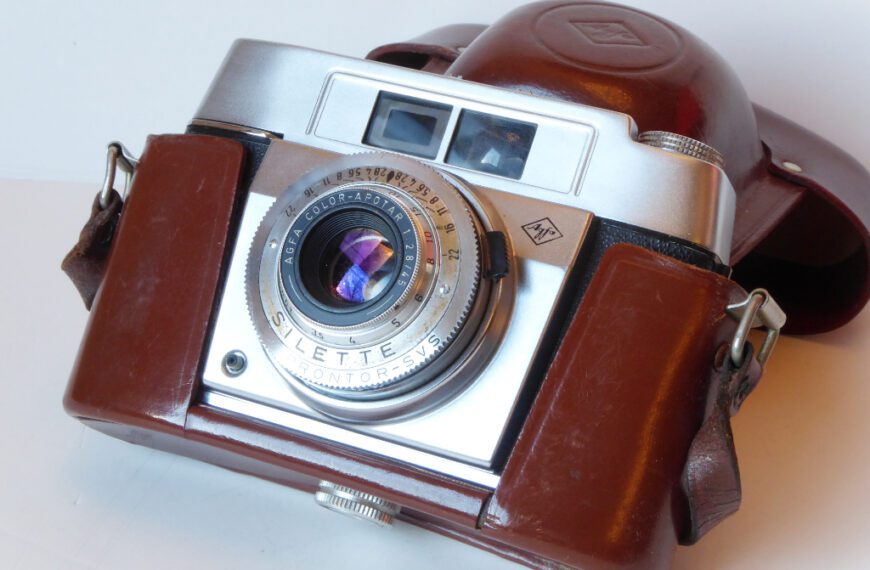
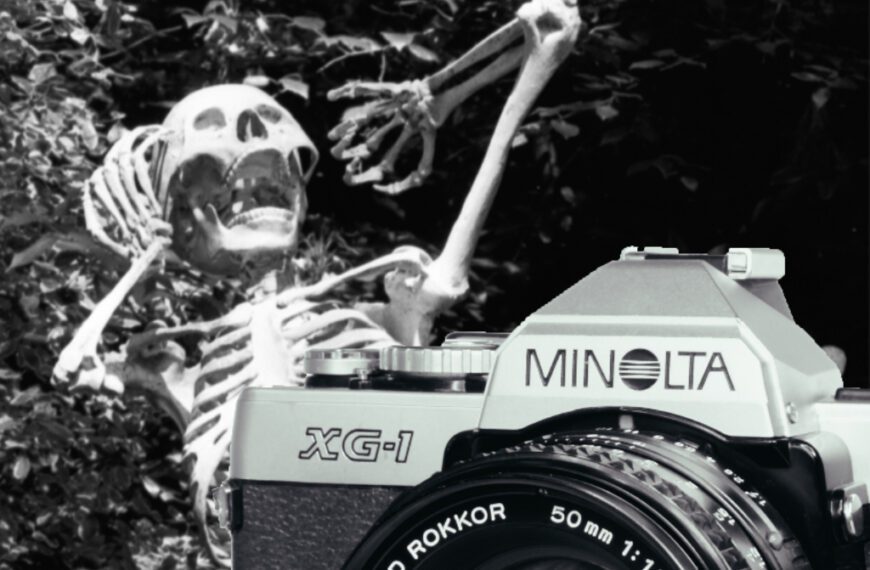
What a refreshing read! I can easily realize your passion from your use of words.
I endeavor to jump into lens repair myself, after a career spanning 50 years repairing increasingly more miniature electronic devices of every ilk.
I am already thinking of clearing off my private workbench downstairs and converting it to camera/lens mode. Thanks for the encouragement.
Craig
Hi Craig,
Many thanks for your kind words. Lens repair is rewarding, fun, frustrating, simple, challenging and always educational. Good luck with your bench clear and send us a pick when you are all set up.
Mel
[…] the right tools and materials, don’t take shortcuts or advice from people who know less than you (check out my camera history here). The biggest issue with the 50mm f1.8 AiS is the very tricky focus helicoil distances. I have […]
Hi Mel.
It’s such a pleasure to find a photography site with articles that goes beyond dry shutter speeds and lens data and isn’t one of those ‘Look-at-me-and-my-15-Leicas!’ones.
Never mind that the images that accompany such articles may be technically superb but are soulless.
In contrast I find your articles are about why we have and look after our cameras – the recording and communication of images which we find raise emotions on us. Why we treasure them and why we pass them on to loved ones.
It’s about why we feel compelled to rescue one from a charity shop, knowing that for some reason it is no longer loved.
In short our cameras are memory makers and because of that why we can form such great attachments to them.
Yes, it’s the camera design, its lines and spec and advertising (which is of course designed to engender desire for the product) that attracts us and makes us buy in the first place.
But it’s what happens after the glossy box is unpacked, the lens fitted turned, the shutter clicked and a relationship started.
And like all relationships it either ‘clicks’ or doesn’t. You hit it off with your new camera or it goes back, or perhaps worse still gets overlooked.
The relationship goes through ups and downs, frustration that you can’t get the images on paper that you see in your head, joy when you do and fear that you won’t be able to do it again.
And at times there’s hate as well as love.
But we keep coming back and raising the camera to complain again about the squinty viewfinder or to feel the cold and weighty body and feel the click of the aperture, or the knurled top plate knobs digging into our fingers.
And then we try and make the magic happen.
Keep on writing, keep on fixing, keep on making new memory makers and releasing them into the wild.
Thanks for the fulsome encomium. For me cameras are many things – they are a recording system for the present and a way of keeping the past in our minds. But beyond that they are masterpieces of human ingenuity and part of why I restore is a kind of tribute to the people who designed and built them. Further the history of cameras in many ways is a history of the industrial/technical age we have been privileged to live in.
Many of the cameras we restore are almost as old as us and whenever I am working on one I wonder what memories it has captured. If they could only talk and tell us of tales.